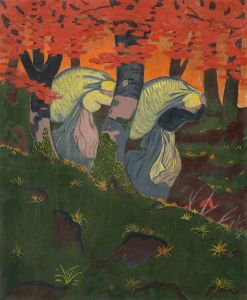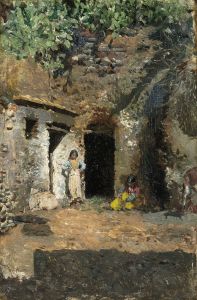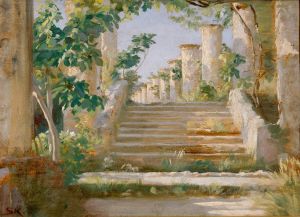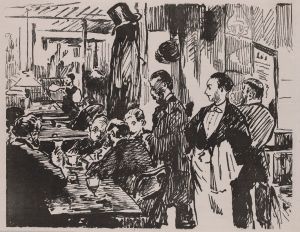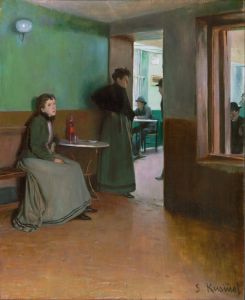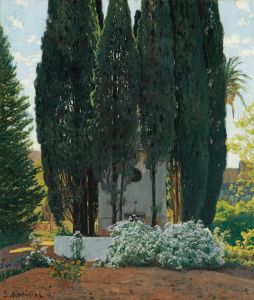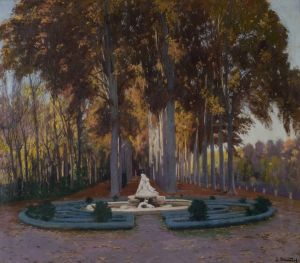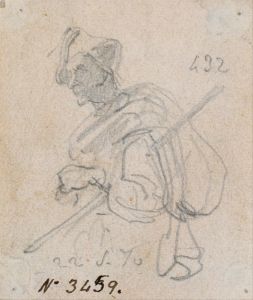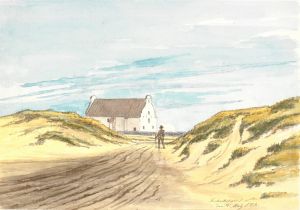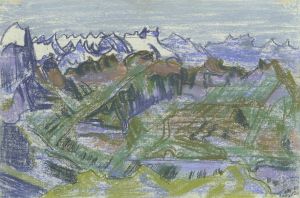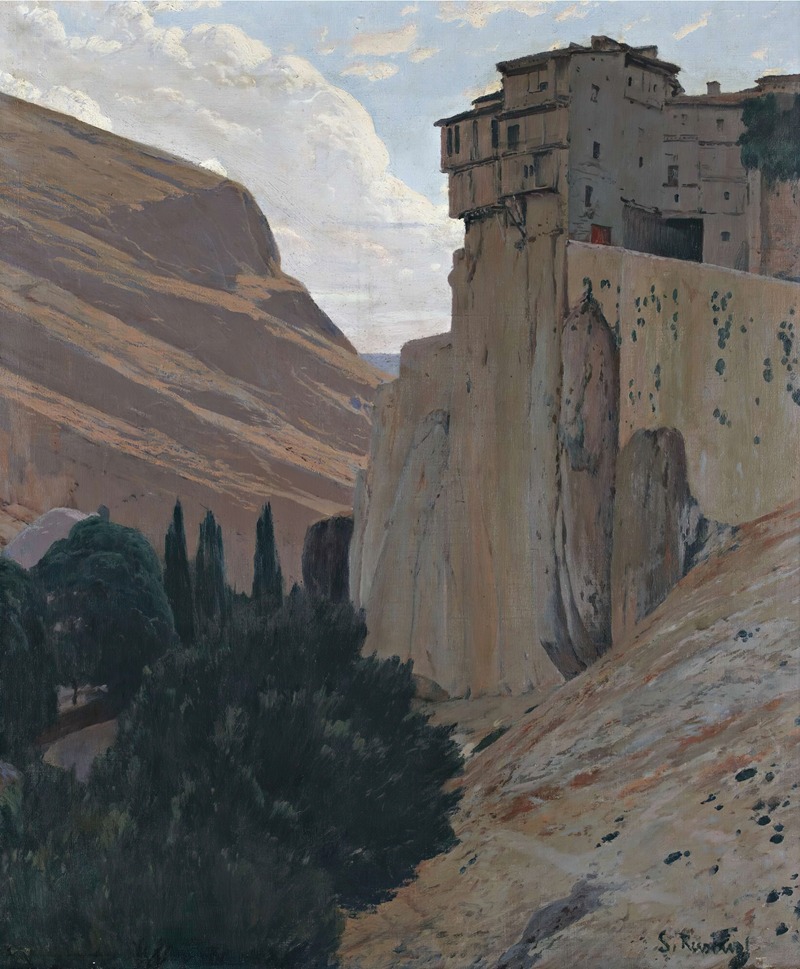
Casas Colgantes, Cuenca
A hand-painted replica of Santiago Rusiñol’s masterpiece Casas Colgantes, Cuenca, meticulously crafted by professional artists to capture the true essence of the original. Each piece is created with museum-quality canvas and rare mineral pigments, carefully painted by experienced artists with delicate brushstrokes and rich, layered colors to perfectly recreate the texture of the original artwork. Unlike machine-printed reproductions, this hand-painted version brings the painting to life, infused with the artist’s emotions and skill in every stroke. Whether for personal collection or home decoration, it instantly elevates the artistic atmosphere of any space.
Santiago Rusiñol's painting "Casas Colgantes, Cuenca" depicts the famous Hanging Houses (Casas Colgadas) of Cuenca, Spain. These iconic structures are a hallmark of Spanish architectural heritage, known for their dramatic positioning on the cliffs overlooking the Huécar River gorge. The painting captures the unique charm and historical significance of these medieval houses, which have become a symbol of the city of Cuenca.
Santiago Rusiñol i Prats (1861–1931) was a prominent Spanish painter, writer, and playwright associated with the Catalan Modernisme movement. He was known for his landscape paintings and his ability to capture the essence of Spanish towns and their architectural beauty. Rusiñol traveled extensively throughout Spain, painting scenes that reflected the cultural and historical richness of the regions he visited. His works often focused on light, texture, and the interplay between architecture and nature.
The Hanging Houses of Cuenca, which are the subject of this painting, date back to the 14th and 15th centuries. Originally, there were many such houses in Cuenca, but only a few have survived to the present day. These structures are notable for their wooden balconies that extend precariously over the edge of the cliffs, creating a striking visual effect. Historically, they served as private residences, though some have since been repurposed for public use, such as the Museo de Arte Abstracto Español (Museum of Spanish Abstract Art), which is housed in one of the remaining Hanging Houses.
Rusiñol's depiction of the Casas Colgantes emphasizes their integration into the natural landscape, highlighting the harmony between human-made structures and their environment. The painting is characterized by his use of light and shadow, which brings out the textures of the stone and wood, as well as the dramatic setting of the houses perched above the gorge. This work reflects Rusiñol's interest in capturing the spirit of Spain's architectural and cultural heritage.
While specific details about the creation date or current location of "Casas Colgantes, Cuenca" are not widely documented, the painting remains an important example of Rusiñol's artistic focus on Spanish landscapes and historical landmarks. It serves as a testament to his ability to immortalize the beauty and uniqueness of Spain's architectural treasures through his art.





